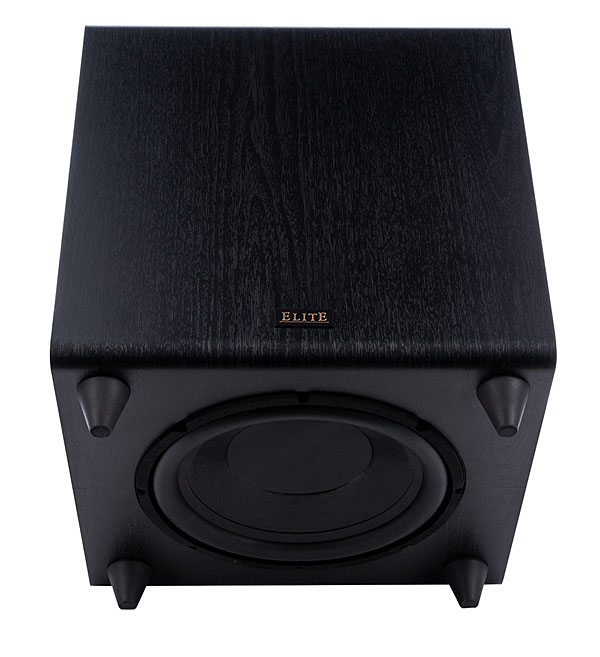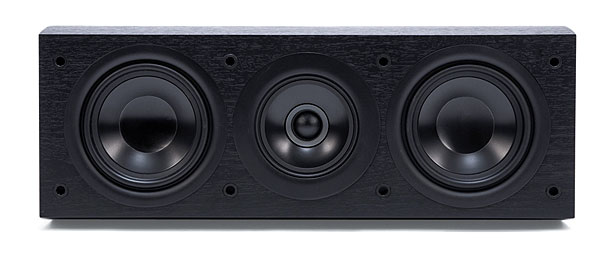Pioneer Elite SP-EBS73-LR Speaker System Review Page 2
You may never get to see the Dolby Atmos Demonstration Disc, so the following examples might seem like a tease, but they did suggest several ways that Atmos might figure in the surround programming of the future—for instance, in music videos. In “Bailando” starring Enrique Iglesias, the lead vocal was pure front LCR, but the height layer carried backing vocals, from the mohawked assistant rapper spurring on Enrique to the massed “oh oh oh oh.” In “Silent,” an animated short subject with a charming child conductor who personifies the mixer (arguably the central character in any surround-encoded content!), the concluding applause suggested a more organic use of height, more like real life.
Even so, the generation and placement of height-layer effects are mainly artificial. Not that artifice is a bad thing; surround sound has always trafficked in it. In Dolby’s other animated shorts, synthesized effects trumped natural ones. In the “Leaf Trailer,” the signature Atmos demo at trade shows, the leaf’s revolving downward trajectory was obviously synthetic. And the hand of the mixer was always evident in placement. Even elements as natural as rumbling thunder and pattering rain were artfully panned. In a couple of Red Bull Formula 1 shorts, height-layer effects seemed almost gratuitous, since cars don’t fly, though the vertical expansion of the soundfield did intensify the physical force of the ferocious engines.
Back to 5.1
While Atmos titles are proliferating in cineplexes, most movies are still released in 5.1 for home use, and the Pioneer speakers were virtuosos in the old-school medium, driven now by my trusty VSX-53 reference receiver. The front coaxial drivers focused dialogue in the center speaker and conjured a convincing soundfield with the monitors anchoring all four corners.

Dom Hemingway stars Jude Law as a hot-tempered ex-con who’s practically a force of nature. His ribald opening soliloquy was all the more compelling for the natural but extremely focused way it was reproduced by the center speaker. Low-frequency events, from ominous thunder to a joy ride that ends in an abrupt thunk, exercised both the monitors’ woofers and the sub, and they dovetailed well, though the sub was no more forceful than an average 10-incher.
In Under the Skin, Scarlett Johansson is a mysterious being who seduces her victims before murdering them. The score accompanies the steadfastly abstract seduction scenes with a churning, dissonant string orchestra. With these speakers, I could almost visualize the violinists and cellists sawing away, and the sound was as edgy and uncompromising as the visuals; these speakers don’t have the warm tilt of previous Jones/Pioneer models. Angry surf on a stony beach gave the four monitors another chance to focus a vivid natural landscape within the soundfield.

Blood Ties has two brothers (Clive Owen, Billy Crudup) exploring a criminal/cop dichotomy. Various moments are emotionally supercharged by classic pop music as mainstream as Gerry Rafferty or as avant-garde as the Velvet Underground. What riveted me was the way the concentric drivers focused not just the music, but the blend of music and ambient sound, producing a unique multilayered experience. “5.1 still pushes my buttons,” my notebook reminded me.
Back to Stereo
By now I had a good idea of how the speakers sounded, but how did they feel? The long-awaited high-resolution audio release of Led Zeppelin IV (or Zoso, if you like) offered answers. One: To my surprise, the monitors felt better running full-range than with the sub. Those 5.25-inch woofers could deliver a tight (though not pile-driving) punch in tracks like “Black Dog.” Two: A play-it-loud track like “When the Levee Breaks” lived up to its potential, with no fatigue-inducing stop signs to mar its shimmering tremolo beauty. Three: Acoustic guitar and mandolin in “Going to California” leaped out of the concentric drivers with pristine nakedness. Here, the drivers combined with the 96/24 FLAC from HDtracks and the Meridian Director USB DAC to mesmerize with never-heard-this-before realism.

Fantasies & Verse Anthems from the English Renaissance composer John Ward arrived on a multichannel SACD from Linn Records. Despite the speakers’ strong imaging, they aren’t the kind of crude treble-boosters that would be merciless to choral vocals and period stringed instruments bouncing off hard surfaces in a chapel. The concentric drivers came through again, using their laser-like focus to present complex timbre, decay, and phase information as a coherent whole. It was more of a you-are-there feeling than I’m used to, even with my reference system.
The Köln Concert is the best of Keith Jarrett’s improvised piano albums, both musically and technically. I wondered if the revealing nature of the concentric driver array would divorce the acoustic character of the city’s opera house from the piano. It did the opposite, tightly linking them into a continuous whole (that word again), which was like a warm bath for the ears. I just melted into it.
If you’ve just invested heavily in a 5.1 or 7.1 system, don’t get bent out of shape. You’ll have the luxury of seeing what the future holds in Atmos speaker advances. It will take years to find out where this new Andrew Jones line stands in the hierarchy of Atmos-enabled speakers.
However, it sure is a great way to get started. If you want Atmos and you want it now, this speaker system is a viable entry point. If you’re looking for a future Atmos upgrade path, the superb 5.1 and 2.0 performance of this speaker system makes it an excellent investment right away. No matter how you spin it, these Elites live up to their name—and at a very non-elite price.
Click here for our review of Pioneer's Atmos-enabled Elite SC-89 AV receiver.
- Log in or register to post comments






























































